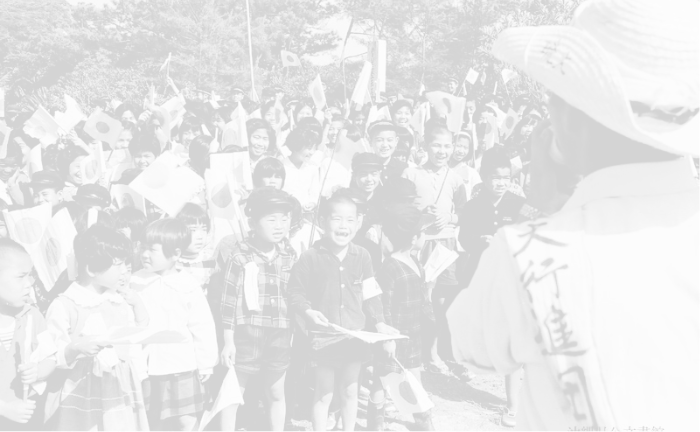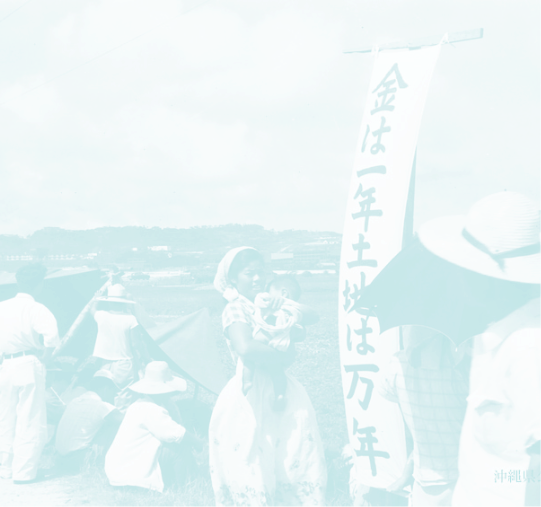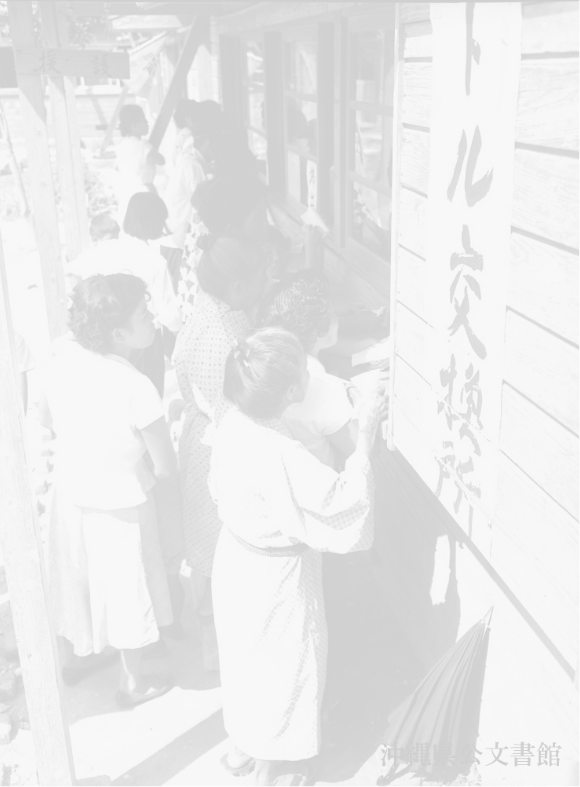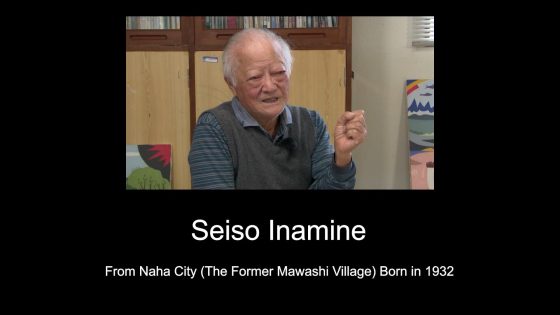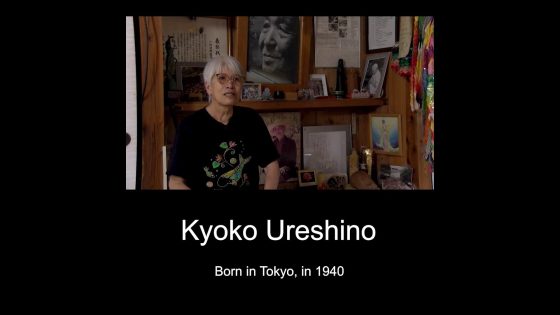
Living in Postwar Okinawa as an Engineer
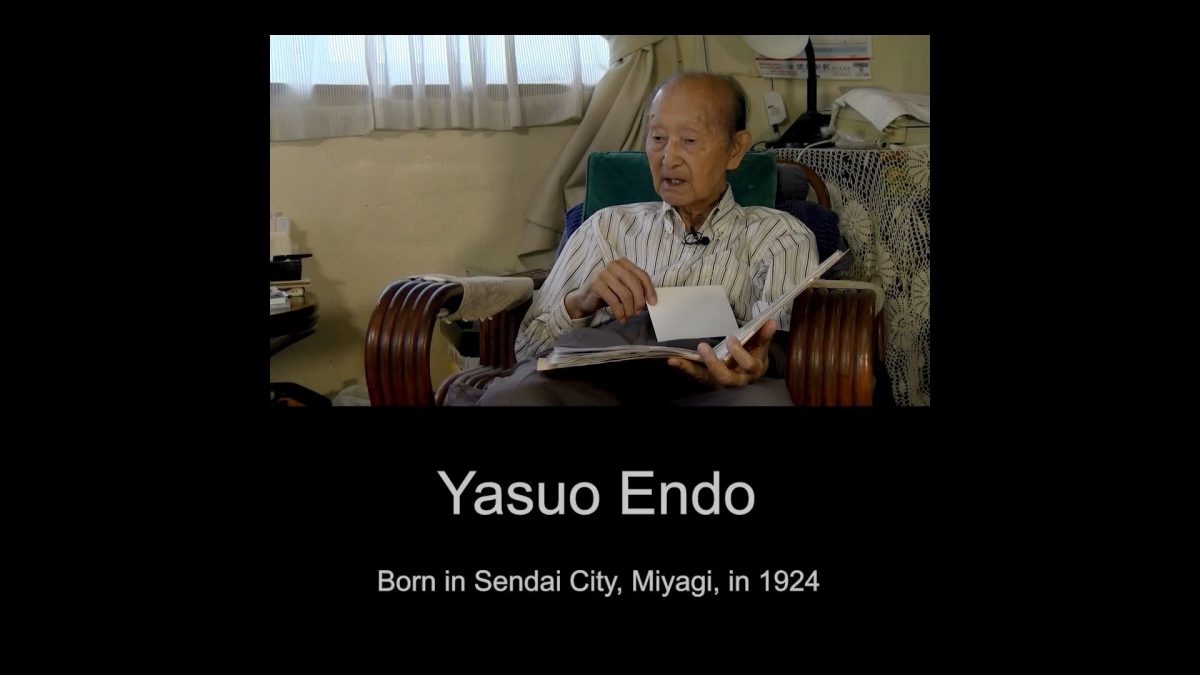

- Born in 1924
- Yasuo Endo
Timeline
| 1924 |
Born in Ranan, northeastern Korea.
|
|
|---|---|---|
| 1942 |
Enrolled in the South Manchurian Institute of Technology in April. In the same year he was mobilized to work in a power plant (affiliated with the Manchurian Railway).
|
|
| 1944 |
Passed the draft examination and was classified as an engineer.
|
|
| 1945 |
Graduated from the electrical engineering department of South Manchurian Technical College in September.
|
|
|
Joined Gisho Radio, a company producing radio equipment (the company was placed under the control of the Soviet military) in October.
*Takes leave in March 1947 (returns to Japan)
|
||
| 1947 |
Repatriated to Japan from Dalian in the end of March. (returned to his hometown of Sendai in early April)
|
|
| 1948 |
Worked as an engineer at Nigatake Camp (Camp Schimmelpfennig) Electricity in Sendai.
*Retired in June 1950
|
|
| 1950 |
Came to Okinawa as an electrical engineer and worked as a Rycom staff engineer for the U.S. Army in October.
|
|
| 1953 |
(Indirectly employed as an associate of Maruyama Architectural Office) Worked as a cove engineer at Camp Kuwae, designing power transmission facilities, etc.
*directly employed by the U.S. (Federal Employment) in April 1958.
|
|
| 1970 |
Prior to Okinawa's return to Japan, he joined Kokubagumi as Manager of the Electrical Construction Department.
(worked there until his retirement in 1983)
|
Story
Brief biography of the witness
He came to Okinawa as an engineer, participated in Okinawa's postwar electrical infrastructure projects, and was involved in Okinawa's reconstruction.
He filmed Okinawa with 8mm cameras from 1951 to about 1970, and has left many images of his work, festivals, and various places in the prefecture, events, and family scenes as a record.
Life in Manchuria and the Pacific War
Born in Ranan during the Japanese Occupation
I was born in Ranan in the northeastern part of the Korean peninsula in 1924. That was the location of the headquarters of the Japanese military's 19th Division. There were four regiments in the same town, and the military made up half the town. Because of that, I woke up in the morning to the sound of military trumpets. Because it was the location of the North Hamgyong Province government office, it was a town of military and government officials. My father's job was as a military merchant, and he went in and out of the military doing various jobs.
Studied Electrical Engineering in Manchuria, Which Was Followed by the Pacific War Era
After graduating from junior high school in Ranan, I was enrolled at South Manchuria Technical School, established by the South Manchuria Railway Company, which was established as a national policy company by Japan after the Russo-Japanese War. The company was said to have everything but the military. In other words, the company was running various companies as side jobs, such as a coal mining company. The company was large, so for the children of the employees, elementary and junior high schools were built in Manchuria. South Manchuria Technical School, from which I graduated, was built in Dairen, to train industrial engineers who could be active anywhere, including Manchuria in the future. I graduated from the school's electrical engineering department.
I was born in February 1924, so I was old enough to join the military when I graduated. I remember that in 1944, I passed the conscription examination and went to the school. I passed the Class A conscription examination and was assessed to be an army engineer. Since I had the qualifications, I naturally aimed to become a management candidate. I worked in the office of a large substation as part of the mobilized labor force. It happened that I heard that there was going to be an important broadcast on August 15th, so the director and several others stood up and listened to the radio on the second floor of the office. I couldn't hear it very well due to the noise, but it was an edict to end the war. Since the war had ended, the substation director told us that the mobilized labor force would be disbanded. So we went back to school. I graduated in September 1945. The war ended on August 15, 1945. At that time, college and high school students were required to enlist in the military, but technical and medical students had a system in which their conscription was deferred until they graduated. Originally, I was planning to graduate in September, and then enlist, but fortunately the war ended just before that, on August 15th.
The Soviet Military Invaded Manchuria
The Soviet military entered Dairen on September 22nd, and tanks and trucks entered the main street making loud noises. The town was filled with Soviet soldiers, so Dairen was occupied by the Soviet military.
I joined Gisho Musen, a relatively large company which manufactured equipment for radio and broadcasting stations. When I joined that company, we were contracted to build equipment for the Soviet Union because the Soviet military had built a large-scale broadcasting station in Lushun, where they were stationed. Our company was placed under the jurisdiction of the Soviet military because we had technology. We got paid to do the work ordered by the Soviet military. My salary was paid in military currency from the Soviet Union at the time.
From Dalian, Japanese repatriation ships began to depart from December 1946. We engineers were stranded because the Soviet military needed us and refused to let us go. Doctors and other engineers whose work was necessary for daily life by the South Manchuria Railway Company, were kept there where possible. Therefore, the repatriation of those people was delayed, and the repatriation of nurses, doctors, etc. was postponed to the following year. Those in poverty were sent home first, and engineers were left behind. I heard a rumor that the last ship would leave at the end of March 1947. I submitted a leave of absence notice to my company and returned to Japan.
Manchuria to hometown Sendai,
Repatriated from Manchuria to Japan
I think it was March 22nd. It took two nights to travel from Dalian on a 5,000-ton cargo ship called Daiichi Taikai Maru, and then arrive in Hario Island in Sasebo. After completing immigration formalities, I arrived back at Sendai station around April 2nd. Around June or July before the end of the war, the central area of Sendai was burnt down by the air raids, turning it into a burned-out field.
Returned to Hometown of Sendai, and Became an Engineer at a US Military Camp
When I returned to Sendai and stayed at home doing nothing, my mother became worried. She saw an advertisement in the newspaper rand told me that the US military in Sendai was looking for electrical engineers. There was a US military base called Camp Schimmelpfennig in Nigatake on the outskirts of Sendai. It was originally the site of a Japanese Navy facility, and after they left, it was used as a US military base. Various types of machinery were repaired there. There was a US military maintenance unit. They wanted Japanese engineers, so there was a job opening for occupation force personnel through the Japanese office, and I was hired.
Went to U. S. -governed Okinawa as an engineer
Left Sendai for Okinawa after the Korean War
The Korean War began around the end of May 1950. In June of that year, half of the US military in Sendai moved to Korea and half to Okinawa. So, due to the Korean War, the US military left Sendai. Since the job at Camp Schimmelpfennig in Nigatake had gone, and it closed down, I had to leave my job.
Near the US military base in Nigatake, there was Camp Fowler with many Japanese staff. The captain invited us to come to Korea or Okinawa with him and help, because he thought that Japanese engineers were very good. I consulted with Camp Fowler's captain and Mr. Yashima, his golfing buddy from Sendai, who owned his own company. Mr. Yashima immediately established a company in Sendai, to dispatch Japanese staff. I heard that about 30 people, mostly young engineers, were dispatched to Okinawa in the first dispatch, so I went to Mr. Yashima's office and told him that I also wanted to go to Okinawa. He told me the second dispatch was to depart in early October, and approximately 12 people departed from Sendai on the night of September 30th. When I went to Tokyo, there was a US military processing office near GHQ. The process took about two days. Early the next morning, the group went to Haneda Air Base and went through processing at the US military office. Then we boarded a transport plane bound for Okinawa via Itazuke Air Base in Fukuoka. We landed at Kadena Air Base just as the sun was setting. When we arrived at Kadena, we were loaded onto a US military truck and driven to Naha to complete entry procedures at the civil government office. When we came to Okinawa, we had received a travel order from Tokyo. In Okinawa, such a procedure was necessary. I went through the entry formalities in Naha, then got back on the truck and headed back to Kadena. After spending the night in Kadena, I got back in a car and arrived at Rycom, just up from Chatan.
Started Life in Okinawa as an Engineer for Rycom
RYCOM is an abbreviation of the Ryukyu's Command, from when the US military invaded the Ryukyu Islands during the war. The US military referred to it by its acronym, RyCom. I started working at an engineering office where an officer in charge of maintenance and management was under the direct control of the headquarters. Half of the office was US engineers who had been working there, and Japanese engineers filled in the gaps.
This is what a RyCom staff engineer did. At that time, when the US military had just arrived and it was just after the war, the office was all temporary barracks. Mobile diesel generators were installed to generate electricity and distribute it to US military installations, and eventually, wires were passed over utility poles to enable distribution. When I first came to Rycom, there was a large mobile generator building that was brought from the US, and they used it to set up poles to distribute power at the high voltage of 2400/4160 volts, which is unique to the U. S. Our purpose in coming at such a time was to improve the facility. I was given a jeep, and my first job was to go to various sites, investigate, and submit a report on what should be fixed and how. The places we went to investigate were where the US military was located. We had to go and check out the facilities. Eventually, such temporary facilities would be removed and new facilities constructed and relocated. We conducted research and design. I'm an electrical specialist, so I did electrical work. We are Japanese, so even though we worked on the base, we couldn't shop at stores that accepted dollars. The salary I received was originally in dollars, but it was converted into yen for me. At that time, there was the B yen (US military bill).
There was a US military headquarters inside the Tenpi Elementary School in Naha. When I was inspecting the school to see if there were any electrical problems, I found a broadcasting station. It was called KSAR, located in a room in the office. I became good friends with the Kabira brothers (Choshin and Chosei). I like music, and the station had a lot of good records, so I could listen to some famous songs while I was working, and we became very close.
Change to Working at Camp Kuwae Due to the Armistice of the Korean War
My job as an engineer in Okinawa was triggered by the Korean War, but two years later, contrary to MacArthur's intentions, the US decided to end the Korean War in an armistice in 1953. Due to that, the organization of RyCom's US military also changed, and Rycom engineers were no longer needed. When I eventually had to return to Sendai, Camp Kuwae was contracted to recruit Japanese after the closure of Rycom. A Rogers Engineer was subcontracted to design electrical and mechanical equipment at SOM, a building equipment design firm. Through that, Rycom came up with a plan to stop Japanese staff from returning home. The design office Maruyama Architects in Tokyo sent some Japanese engineers to SOM. I was offered a contract under the umbrella of Maruyama Architects, and I was accepted to work at Camp Kuwae.
Kuwae's unit was an engineering unit. It was called the US. Army Corps of Engineers. Unlike the former Japanese military, the U. S. Army Corps of Engineers is was a type of contractor, ordering the construction of equipment or areas deemed necessary by the Navy or Air Force offices. Cove Engineers created a design and ordered it from a contractor. For example, in the case of Okinawa, in terms of electrical work, when I first arrived in Okinawa, Cove Engineers ordered a power plant to be built in Makiminato, and a Japanese contractor submitted a bid. At that time, a power plant with an output of 46,000 kilowatts was built in Makiminato. That was around 1952 or 1953. Once a power plant is built, transmission lines are needed. Hitachi Koji built a 60,000 volt steel tower transmission line from the Makiminato Power Plant to Naha, Kadena, and other locations. So when I arrived, Hitachi Koji was also building a steel tower near Rycom.
From U. S. military workplace to local construction company
Working for Kokuba Gumi after Okinawa’s Return to Japan
At the Nixon-Sato meeting, it was announced that Okinawa would be able to return to Japan within two to three years. So, the US military needed to return Okinawa to Japan quickly. So it had been decided to close Camp Kuwae's Cove Engineer Okinawa District, and I lost my job. However, Roy Shield, who was the same age as me, and who was the branch chief of design which was above the electrical section and who took very good care of the Japanese, introduced me to a local construction company, called Kokuba Gumi. There was an older staff member who, like me, graduated from South Manchuria Technical School. He anticipated that I would come, and invited me to join the company. Although the administration of US-governed Okinawa changed to Japan in 1972, the reversion of Okinawa to Japan was already underway at the end of 1970, so I was able to leave the US military workplace to join Kokuba Gumi at the end of 1970. It meant that I had already become an employee of Kokuba Gumi before Okinawa returned to Japan. Kokuba Gumi believed that if Okinawa returned to Japan, major construction companies from the mainland would come to Okinawa one after another. That’s why the company wanted experienced people originally from the mainland like me. I was the person who fit the bill.
Looking Back on All That Has Happened So Far
Tragedies happened in battles that were lost during the war. My friend lost his life in a US airstrike. Another friend was shot to death by the Soviet military after the war. I have had many sad experiences. I was lucky enough to have my life spared and return home, but I hoped for Japan's quick recovery and the day when the people who suffered during the Battle of Okinawa could live normally.
